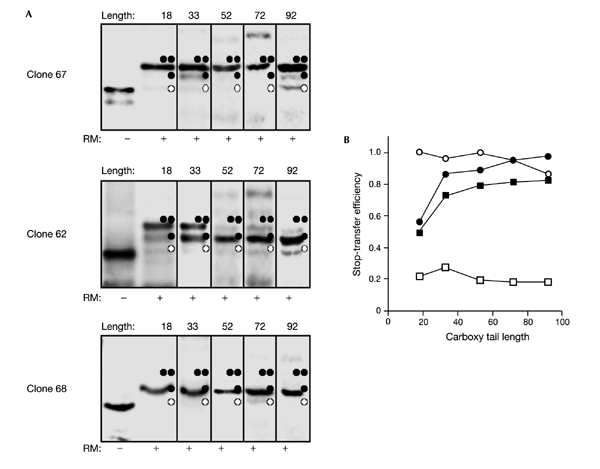Figure 2.

Stop-transfer efficiency increases with the carboxy tail length for a marginally hydrophobic S-segment. (A) Clones 62, 67, and 68 with different carboxy tail lengths were translated in the absence and presence of dog pancreas rough microsomes. Unglycosylated, singly glycosylated, and doubly glycosylated products are indicated by one white circle, one black circle, and two black circles, respectively. Carboxy tail lengths are shown above the lanes. (B) Stop-transfer efficiency (the quotient between the intensity of the singly glycosylated product to the summed intensities of the singly and doubly glycosylated products) as a function of carboxy tail length (the number of residues between the C-terminal end of the S-segment and the C terminus) for clones 62 (black squares), 67 (white squares), 68 (white circles), and 62-pPL (black circles). Each value is an average of at least two independent experiments.
